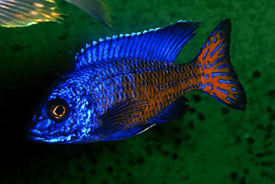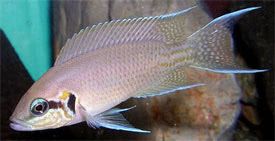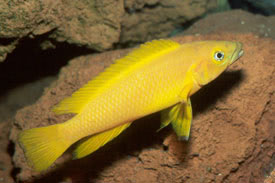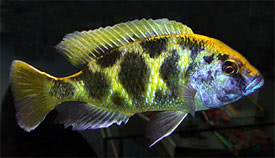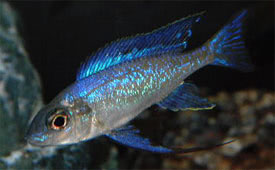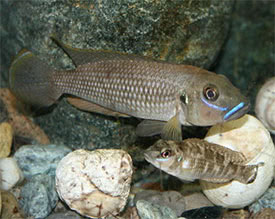
 Magyarul / Hungarian
Magyarul / Hungarian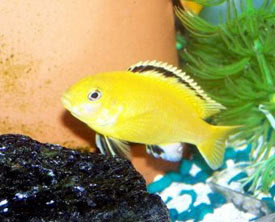

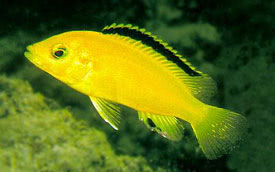

- Scientific name: Labidochromis caeruleus
- Common name: Yellow Labid., Electric Yellow Mbuna, Caeruleus, Lion's Cove Yellow
- Group: Cichlids
- Habitat: Eastern Africa; Lake Malawi
- Size: 10 cm.
- Biotope: This fish is usually found at depths of 10 to 100 feet (3-31m).
- Social behavior: The Yellow Labid is among the least aggressive of mbunas, although it still can be combined in a community tank with other species of mbunas. Provide a retreat for each fish. As with other mbunas, the Yellow Labid does best when one male is kept with several females. When guarding the brood, the parents become highly aggressive. The Yellow Labid is often harassed by dissimilar species because of its conspicuous coloration.
- Diet: Flake; live; snails, bloodworms, mosquito larvae, microorganisms, crustaceans, snails, Tubifex ; chopped meat; pellets; tablets; vegetables; peas, lettuce, spinach; fruit. Be sure to feed this fish a healthy diet, so it can retain its beautiful colors.
- Breeding: Easy.
- Tank: Minimum 100 litres (for each couple);
- Population: 1 male and 2-3 females for 200 litres
- Decoration: The tank should be arranged with rock structures that extend from the bottom of the tank to the water surface. Provide hiding places in these structures with caves and crevices. Use a coral sand substrate to buffer the water to an alkaline pH. Plants will not usually be eaten, so hardy species can be used (Vallisneria).
- Temperature: 25-26°C
- pH:>7,7-8,6
- Hardness: 10-25 NK°
- Lifespan: 10 years
Description: The body is elongated and the forehead is slightly arched. The body color is bright, sunshine yellow. The dorsal fin is elongated, running from the above the gill cover to the base of the caudal fin. The fringe of the dorsal fin is yellow, while the rest of it is black. The pelvic and first rays of the anal fin are also black in color. The eye often has a small, black stripe running across it.
The male has a greater arch on its head and may be slightly larger.
Forms a matriarchal family. The eggs are laid on carefully cleaned rocks and fertilized with the dummy-egg method. Up to 20 eggs are laid. They are then mouthbrooded by the female (ovophile mouth brooder) for 21-25 days. The fry are sturdy and are free-swimming after 3 weeks, at which time they can be fed small live foods and powdered dry. The female continues to guard the fry for a week after they are first released from the mouth.



